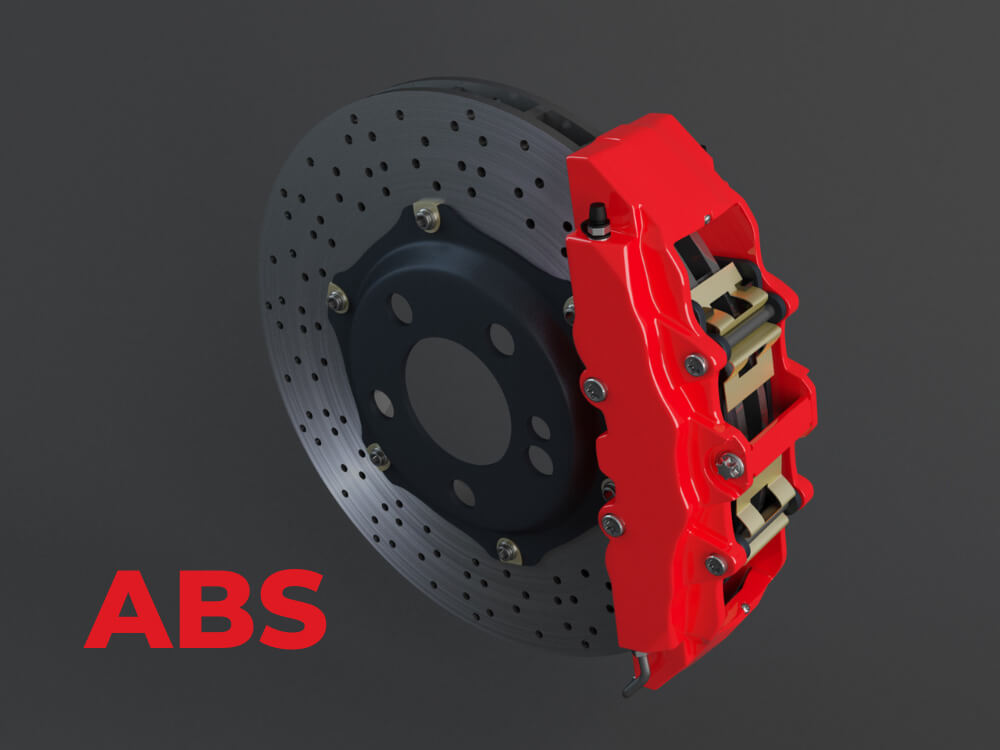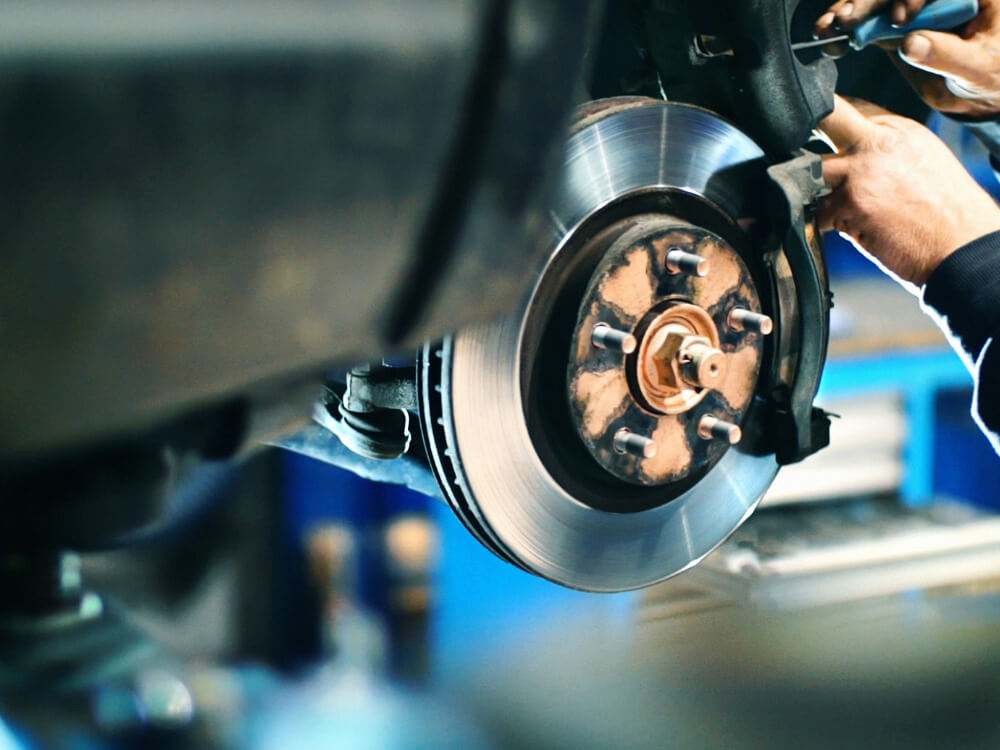

Anti-lock Braking System (ABS) is a vital component of modern vehicles, designed to ensure maximum safety and control while braking. Essentially, it is a safety feature that helps prevent wheels from locking up during sudden braking or emergency stops, thus preventing skidding and allowing drivers to maintain steering control. In simple terms, ABS is a technology that allows vehicles to stop more quickly and efficiently, while maintaining their stability and control.

The importance of ABS in modern vehicles cannot be overstated. In the event of an emergency braking situation, ABS can make the difference between a safe stop and a potentially life-threatening accident. Without ABS, a vehicle’s wheels can lock up, causing it to skid out of control and potentially collide with other vehicles, objects, or pedestrians. However, with ABS, the brakes are applied and released rapidly, preventing the wheels from locking up and allowing the driver to maintain control of the vehicle.
Not only does ABS help prevent accidents, but it also enhances the overall driving experience. ABS allows for shorter stopping distances and improved stability while braking, which translates into a smoother and safer ride. For this reason, ABS has become a standard feature in modern vehicles, and it is a critical component of any vehicle’s safety system.
ABS is an essential safety feature that has become a standard in modern vehicles. Its ability to prevent wheel lock-up, maintain steering control, and reduce stopping distances makes it an indispensable tool for drivers. By prioritizing the importance of ABS in modern vehicles, drivers can help ensure their safety and the safety of others on the road.
The history of Anti-lock Braking Systems (ABS) dates back to the early 1900s, but it was not until the 1950s that the technology began to take shape in the form of hydraulic systems. The first modern ABS was developed by the German company Bosch in the 1970s, and it quickly became a standard feature in luxury cars.
The first ABS systems used a hydraulic valve system to control the braking pressure on each wheel independently, allowing the wheels to rotate freely and preventing them from locking up. However, these systems were relatively primitive and were not very effective in preventing skidding and maintaining control of the vehicle.
In the 1980s, electronic control units (ECUs) were introduced into ABS systems, which allowed for more precise control over the braking pressure on each wheel. This significantly improved the effectiveness of ABS, making it a more reliable and efficient safety feature. As the technology advanced, ABS systems also became more sophisticated, incorporating additional features such as traction control, stability control, and adaptive braking.
In the 1990s, ABS began to become more widely available in mass-produced vehicles, and by the early 2000s, it had become a standard feature in most new cars. Today, ABS has become an essential safety feature in modern vehicles, and it is an integral part of the overall safety system that includes airbags, seatbelts, and other safety features.
The evolution of ABS technology has been driven by a combination of technological advancements and increasing awareness of the importance of vehicle safety. The development of ECUs allowed for more precise control over the braking pressure, which significantly improved the effectiveness of ABS in preventing skidding and maintaining control of the vehicle. As the technology continued to evolve, ABS systems also became more sophisticated, incorporating additional features such as traction control, stability control, and adaptive braking.
In recent years, the focus has shifted towards developing advanced safety systems that can prevent accidents before they occur. This has led to the development of technologies such as forward collision warning, automatic emergency braking, and lane departure warning, which work in conjunction with ABS to provide a comprehensive safety system for modern vehicles.
ABS is composed of several different components, including speed sensors, hydraulic valves, an electronic control module (ECM), and a hydraulic pump. The speed sensors are located on each wheel and send data to the ECM, which analyzes the data to determine if a wheel is about to lock up. The hydraulic valves control the flow of brake fluid to each wheel, while the pump maintains the pressure in the braking system.
When a driver applies the brakes, the ABS system automatically engages and begins to
modulate the brake pressure to prevent wheel lock-up. If the system detects that a wheel is about to lock up, it reduces the brake pressure to that wheelto allow it to rotate freely. As soon as the wheel starts to rotate again, the system increases the brake pressure to slow the vehicle down. This process is repeated multiple times per second, allowing the vehicle to come to a safe stop without skidding or losing control.
The key to how ABS works is that it prevents the wheels from locking up, which is what causes skidding and loss of control. When a wheel locks up, it no longer rotates, and the vehicle loses its ability to steer. This is because locked wheels have no traction, and the vehicle will slide in the direction of the locked wheel.
By preventing wheel lock-up, ABS ensures that the driver maintains control of the vehicle and can steer it in the desired direction. This is particularly important in emergency braking situations, where sudden stops can be necessary to avoid collisions or other hazards.


As with any vehicle system, ABS requires regular maintenance to ensure that it functions properly. In this section, we will discuss the maintenance and troubleshooting procedures for ABS, as well as how to detect and diagnose ABS problems.
Maintenance Procedures:


Detecting and diagnosing ABS problems can be challenging, but with the right tools and knowledge, it can be done. Here are some steps to follow:
Vehicles with ABS have significant advantages over those without ABS in terms of safety and performance. Here are some key differences to consider:
To summarize, vehicles with ABS have significant advantages over those without ABS in terms of safety, performance, and overall driving experience. The following comparison table highlights some of the key differences between vehicles with and without ABS:
In conclusion, ABS is a crucial safety feature that can make a significant difference in driving performance and safety. Vehicles equipped with ABS have a shorter stopping distance, better steering control, skid prevention, and reduced tire wear compared to those without ABS. While the initial cost of purchasing a vehicle with ABS may be higher, the benefits in terms of safety and performance make it a worthwhile investment.
ABS stands for Anti-lock Braking System. It is a safety system designed to prevent wheel lock-up and skidding during sudden or hard braking. ABS works by detecting the rotation speed of each wheel and adjusting the braking pressure to prevent the wheels from locking up.
The easiest way to tell if your ABS system is working is to check the ABS warning light on the dashboard. When you start the vehicle, the light should illuminate and then turn off after a few seconds. If the light stays on or comes on while driving, it indicates a problem with the ABS system. You can also test the ABS system by performing an emergency brake test on a safe and clear road.
If the ABS warning light comes on, it indicates a problem with the ABS system. You should have the system checked by a professional mechanic as soon as possible. Until the issue is resolved, the ABS system may not function correctly, and you may have a higher risk of skidding and losing control during sudden or hard braking.
No, not all vehicles have ABS. It was initially introduced in the late 1970s, and it became standard on most vehicles by the early 2000s. However, some older or budget vehicles may not have ABS, while some high-end vehicles may have advanced ABS systems with additional features.